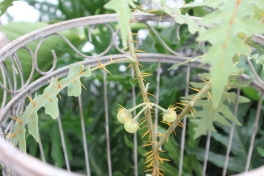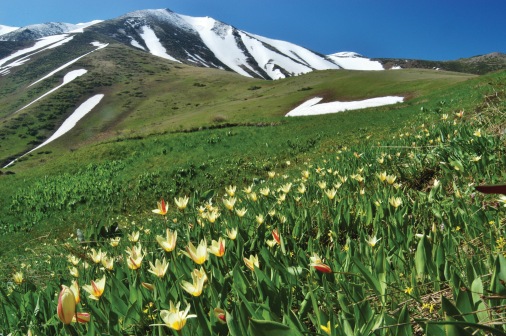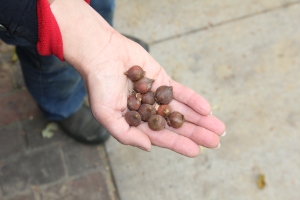 Boo! Scary Plants for Your Garden
Boo! Scary Plants for Your Garden
By Teresa Woodard
I love a good scare – a scary movie, a haunted house and even an occasional hide-behind-the-door prank.  So, I was captivated by the Franklin Park Conservatory’s timely “Scary Plants” exhibit which turned out to be a virtual fun house of horticultural horrors!
So, I was captivated by the Franklin Park Conservatory’s timely “Scary Plants” exhibit which turned out to be a virtual fun house of horticultural horrors!
Two flesh-eating favorites starred in the carnivorous plants display. The American pitcher plant (Sarracenia) lures prey inside its trumpet-shaped leaves with an intoxicating nectar.
 The Venus fly trap (Dionaea muscipula) tricks insects with its open trap that snaps shut when insects unknowingly touch trigger hairs that signal the trap.
The Venus fly trap (Dionaea muscipula) tricks insects with its open trap that snaps shut when insects unknowingly touch trigger hairs that signal the trap.
Equally scary, another group of vicious plants are famed for their spikes and hidden poisons. Don’t be fooled by Daturas’ beautiful blooms – the plants contain highly poisonous tropane alkaloids that can cause hallucinations and even death. Castor bean plants (Ricinus communis) may be fun to grow for their colorful foliage and interesting seed pods, but the plant contains ricin, a deadly toxin. Even the beloved Ohio buckeye (Aesculus glabra) produces nuts that contain poisonous tannic acid.
On the prickly side, be sure to sidestep any honey locust trees and their wicked thorns. A neighbor boy was hiking in a nearby preserve with our kids and stumbled upon a thorn which punctured his knee. Ouch! Prickly pear (Opuntia polycantha ‘Bronze’) and porcupine tomato (Solanum pyracanthum) are two other don’t-touch plants.
A final group of plants are more bizarre than scary. Check out gray-haired ‘Old Man’ cactus (Cephalocereus senilis) and pumpkin-on-a-stick (Solanum aethiopicum) which is a relative to tomatoes and eggplants. 

If I haven’t scared you away, visit Franklin Park Conservatory to learn more about these botanical wonders. The ‘Scary Plants’ exhibit runs through Nov. 9. Other ghoulish garden events include the Haunted Conservatory (Oct. 30) at Garfield Park Conservatory in Indianapolis, the Creepy Crawl (Oct. 31)at Missouri Botanical Gardens in St. Louis, and the Jack-O-Lantern Spectacular (through Nov. 9) at Iroquois Park in Louisville.










